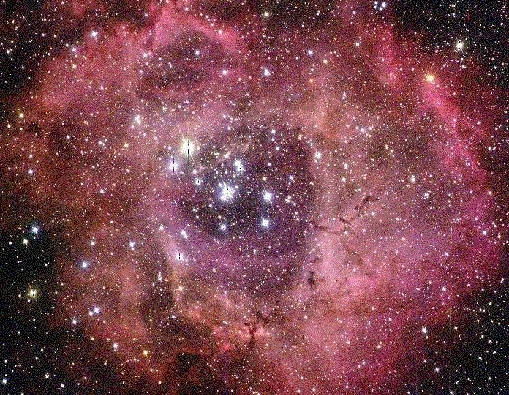Astronomy Picture of the Day
Discover the cosmos!
Each day a different image or photograph of our fascinating universe is
featured, along with a brief explanation written by a professional
astronomer.
May 22, 1996

Star Cluster in the Rosette Nebula
Credit:
P. Seitzer
(U. Michigan),
Curtis
Schmidt Telescope,
CTIO,
Chile
Explanation:
Embedded in the center of the colorful and photogenic
Rosette Nebula is a bright, young
open cluster. The bright blue
stars in this cluster, labelled NGC 2244, emit
ultraviolet light that
knocks electrons away from
hydrogen atoms.
When the electrons fall back,
they emit the red light which distinctively defines the glow of all
emission nebulae. The
Rosette Nebula is thousands of light years distant,
but light would take only about 100 years to cross it. The
Rosette Nebula
is not difficult to observer and, although faint, actually appears larger
than the
full moon.
Tomorrow's picture: The Violent Star Cluster 30 Doradus
| Archive
| Index
| Search
| Glossary
| Education
| About APOD |




Authors & editors:
Robert Nemiroff
(GMU) &
Jerry
Bonnell (USRA).
NASA Technical Rep.:
Sherri
Calvo.
Specific rights apply.
A service of:
LHEA
at
NASA/
GSFC




